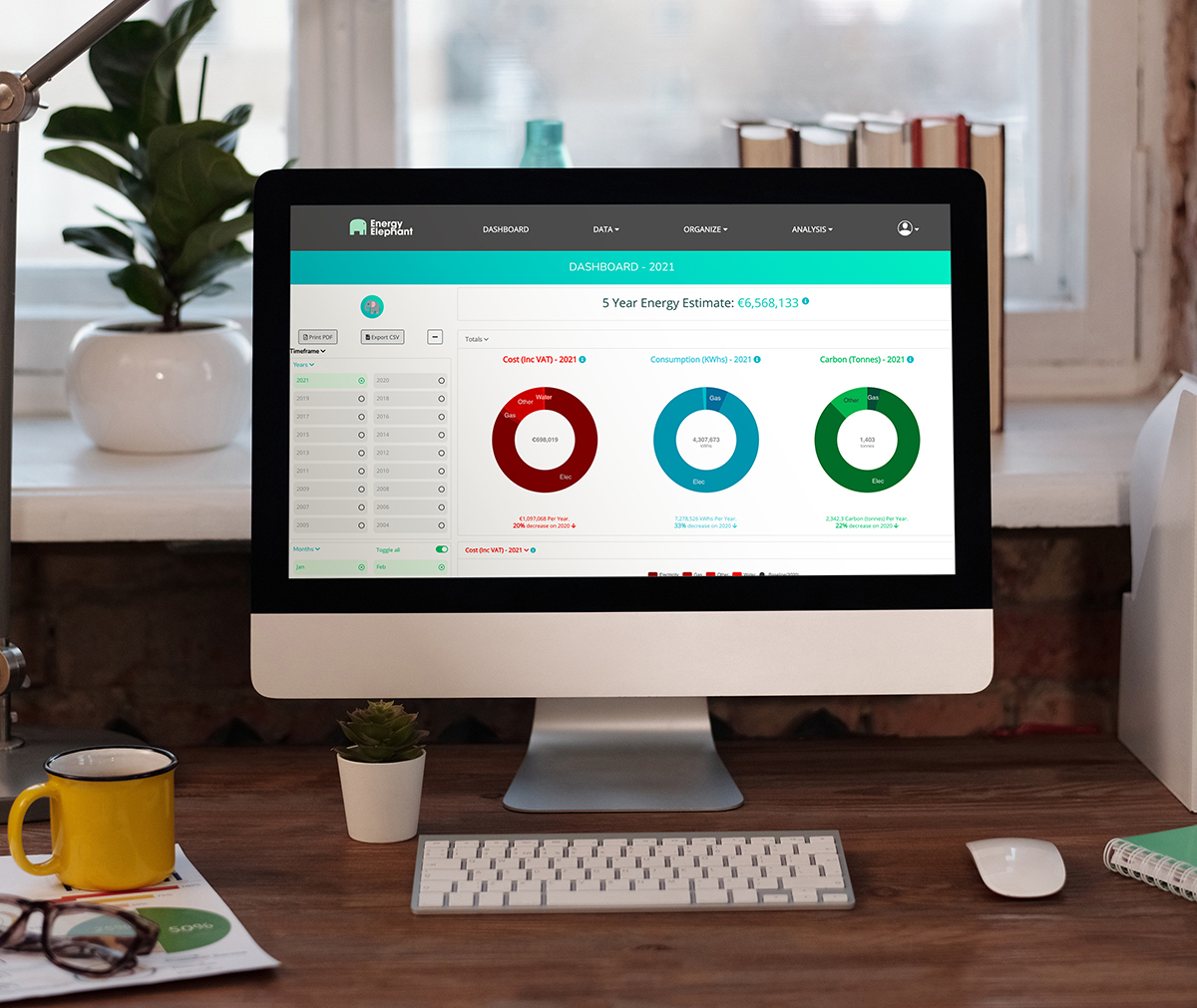Energy Managers & Facilities Teams
Automate energy and carbon data management, streamline reporting, and optimise efficiency for cost-effective, sustainable operations.

Energy Managers & Facilities Teams
Facilities Teams and their senior leadership, including Energy Managers, ensure an organization’s facilities and energy assets are operated cost-effectively, safely, and sustainably.
They manage and regularly report on energy efficiency, renewables, control systems, and storage, as well as plan future sustainability projects for improving resiliency.
Key Responsibilities of Energy Managers & Facilities Teams
Energy Management
Monitoring and managing energy consumption and costs across all facilities, including buildings, infrastructure, and equipment.
Compliance and Reporting
Preparing reports for internal and external stakeholders, ensuring compliance with relevant environmental regulations and reporting frameworks.
Data Collection and Analysis
Working with large and growing data sets from various sources, including utility bills, building management systems (BMS), and smart meters/IoT sensors to understand energy consumption patterns, identify areas for optimization, and make informed decisions about energy and carbon management strategies.
Data Continuity
Ensuring consistent availability, integrity, and usability of energy data, preventing disruptions that could lead to operational downtime.
Developing and Implementing Improvement Projects
Creating and executing plans across the organization's facilities to achieve improvements in energy efficiency, cost savings, and demonstrable environmental benefits, such as lighting upgrades, HVAC optimization, and renewable energy integration.
Budgeting and Forecasting
Developing and managing energy budgets, forecasting future consumption, and identifying opportunities for cost savings.
Stakeholder Engagement
Communicating with internal stakeholders to raise awareness about energy efficiency and gain buy-in for sustainability projects and initiatives.
Managing External Relationships
Working with energy suppliers, consultants, and contractors to negotiate contracts, implement energy efficiency measures, and ensure the smooth operation of energy systems.
Common Challenges Faced by Energy Managers & Facilities Teams
Data Management Complexity
You spend an excessive amount of time manually gathering, validating, and analysing energy and sustainability data from multiple sources such as spreadsheets, utility bills, metering, and building management systems... and you’ve learned the hard way that manual processes are prone to human error.
Data Silos and Swamps
Your organization’s proliferation of data silos, poorly-managed data lakes, and legacy systems contain a hodgepodge of software patches, workarounds, and poor design which make it difficult to extract any meaningful business value from the data.
Lack of Integration with Existing Systems
Because of a lack of seamless integration with existing building management systems, metering infrastructure, and other relevant data sources, you struggle to get a clear, consolidated view of energy consumption and costs across multiple sites and business units, which means missing out on potential savings.
Limited Insights and Actionable Recommendations
You lack the tools and insights to accurately identify sources of energy waste and inefficiency across your organization's facilities, which makes it difficult to prioritize improvement projects in terms of effectiveness and return-on-investment (ROI).
Limited Resources
Generating reports for various stakeholders, including internal management, regulatory bodies, and sustainability reporting frameworks can be very time-consuming.
Internal Resistance to Change
Overcoming resistance to sustainability initiatives from staff or other stakeholders who are reluctant to adopt new energy-saving practices or technologies can be a cause of frustration.
Budget Constraints
Securing buy-in for adequate funding to upgrade outdated energy management systems and infrastructure investments that may have a longer payback period can be hard, hampering your ability to implement energy efficiency projects.
Key Concerns for Energy Managers & Facilities Teams
Recruitment and Retention
It can be difficult to find, hire, and retain staff with critical skills in the area of energy and facilities management if they are expected to work off legacy spreadsheets or outdated software systems.
Risk of Financial Penalties
Failure to achieve tangible energy consumption and cost reductions can impact your organization’s sustainability targets, and non-compliance with evolving ESG (Environmental, Social, and Governance) regulations can have a significant risk impact on your organization’s bottom line, especially in the medium term.
Reputational Damage
Your organization could suffer negative publicity or stakeholder criticism if you fail to address sustainability issues effectively, leading to lost market share and increased PR crisis costs.
Falling Behind Competitors
Your organization could lose a competitive advantage if it doesn't keep pace with sustainability best practices, including transparent access to audit-ready carbon and GHG emissions data for Scope 1 (direct emissions), Scope 2 (electricity/heat indirect emissions), and in some cases Scope 3 (supply chain and other indirect emissions).
How Can We Help?
At EnergyElephant, we believe that everyone can quickly achieve great sustainability outcomes without needing to be an expert, so we built a powerful but simple-to-use platform to make this a reality.
Our automated, data-driven approach allows you to spend less time and effort manually wrangling vast amounts of energy and carbon data, so you can focus more time and energy on actions that deliver actual carbon reductions, with significant cost and energy savings to boot.

We have a climate action roadmap, and we have an energy register. [Using EnergyElephant] we monitor our energy use on a monthly basis. And at the moment, we’re sitting on a reduction of 38.7% in greenhouse gas emissions on our built infrastructure.
